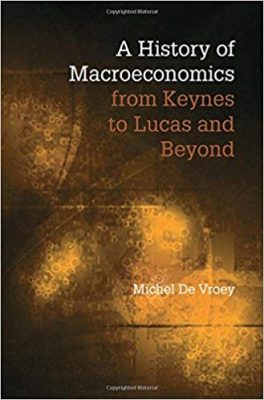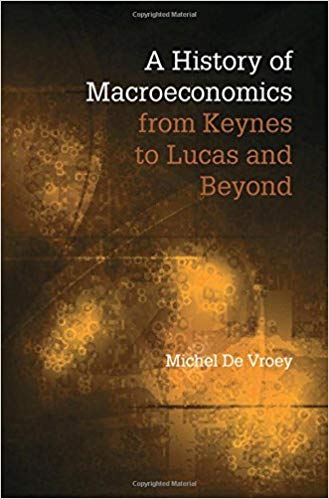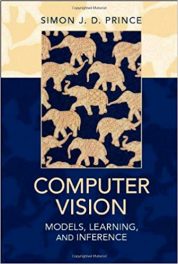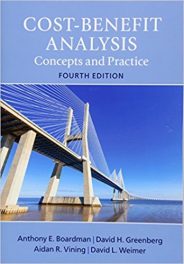 Author: Michel de Vroey
Author: Michel de Vroey
Publisher: Cambridge University Press – 429 pages
Book Review by: Sonu Chandiram
The British economist John Maynard Keynes (1883-1946) became a well known figure in the world of macroeconomics when his book The General Theory of Employment, Interest, and Money was published in 1936.
This book of Keynes, who became known as the founder of modern macroeconomic theory, essentially changed the then existing economic policies of governments relating to important actions that altered (for better or worse) the lives, particularly the economic well-being of citizens, including but not limited to:
- Interest rates
- Government budgets
- Labor market
- Money Supply
- National ownership of businesses
- Taxation
In essence, Keynes built upon and greatly refined earlier work by other economists on the causes of business and employment cycles, which in turn influenced thinking and action (or non-action) by leaders on other policies we list above.
In this 2016 book, the author – Professor Michel Vroey – writes in the Preface that the ideas of Keynesian macroeconomics have undergone radical change over the last 80 since Keynes’ book was released. He points out to the “dethroning of Keynesian macroeconomics and its replacement by dynamic stochastic macroeconomics by Robert Lucas.” And he suggests that “this revolution begs to be assessed.”
The reassessment of Keynes’ economics and the examination of Lucas’ ideas is what this book is essentially about. The book contains the chapters we list below, providing you the reader a broad overview of its contents:
- Part I. Keynes and Keynesian Macroeconomics
- Keynes’ General Theory and the Emergence of Modern Macroeconomics
- Keynesian Macroeconomics: The IS-LM Model
- The Neoclassical Synthesis Program: Klein and Patinkin
- Milton Friedman and the Monetarist Debate
- Phelps and Friedman: The Natural Rate of Unemployment
- Leijonhufvud and Clower
- Non-Walrasian Equilibrium Modeling
- Assessment
- Part II. Dynamic, Stochastic General Equilibrium (DSGE) Macroeconomics
- Lucas and the Emergence of DSGE Macroeconomics
- A Methodological Breach
- Assessing Lucas
- Early Reactions to Lucas
- Reacting to Lucas: First-Generation New Keynesians
- Reacting to Lucas: Alternative Research Lines
- Real Business Cycle Modeling: Kydland and Prescott’s Contribution
- Real Business Cycle Modeling: Critical Reactions and Further Developments
- Real Business Cycle Modeling: My Assessment
- Second-Generation Keynesian Modeling
- Part III. A Broader Perspective
- The History of Macroeconomics through the Lens of the Marshsall-Walras Divide
- Standing Up to DSGE Macroeconomics
- Looking Back, Looking Ahead
When the Great Depression of 1930 occurred, there was massive unemployment in all developed countries, with hordes of starving people trying to survive by lining up to get food for themselves and their families. Why and how did this devastating event occur? The leaders of the countries it affected were looking for answers.
Michel Vroey writes in a point blank manner: “Keynes aim in writing this book (The General Theory of Employment, Interest, and Money) was to identify the causes of the massive unemployment that affected all developed economies in the Great Depression years. The 1930s were also a time during which Russia was experiencing strong economic results to the effect that a possible electoral victory of parties leaning toward communism (or taking power in more unorthodox ways) was a possibility that could not be discarded.”
“In short, capitalism was in peril, both economically and politically, and Keynes realized that its survival implied important changes in its functioning, and the task ahead intertwined theory and persuasion,” Vroey points out, and quotes Robert Skidelsky as making this astute statement:
“Keynes understood that his theory had to be usable for politicians and administrators: easily applied, offering political dividends. But he also understood that, before he could win the political argument, he had to win the intellectual; argument.”
We will not get into comparing and contrasting the main points of Keynes’ macroeconomics with those of Lucas’ dynamic stochastic general equilibrium, and leave that to you to discover them by yourself in this uniquely excellent work by Michel Vroey.
Author:
Michel de Vroey is a professor emeritus at the Universite Catholique de Louvain (UCL) in Louvain-la-Neuve, Belgium, and a visiting professor at the Universite Saint Louis in Brussels. He has held visiting positions at the Sorbonne University, Duke University, the University of British Columbia in Vancouver, Canada, and Clemson University in Clemson, South Carolina.
He has published several books including Involuntary Unemployment: The Elusive Quest for a Theory (2007), and Keynes, Lucas: D’une macroeconomie a l’autre (2009). He has also published extensively in scholarly journals.







